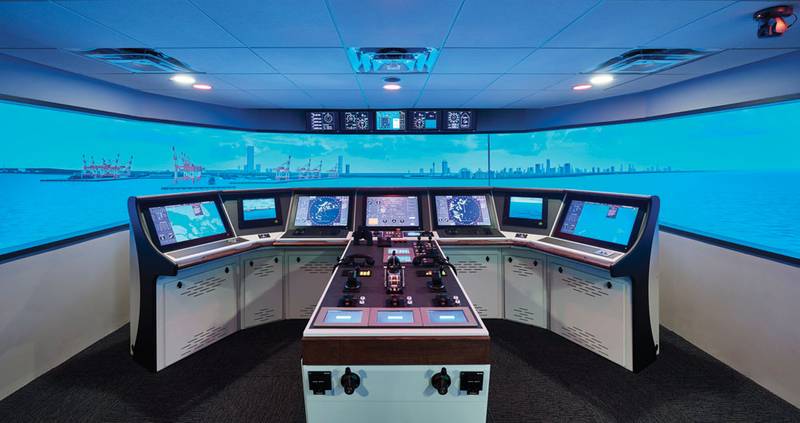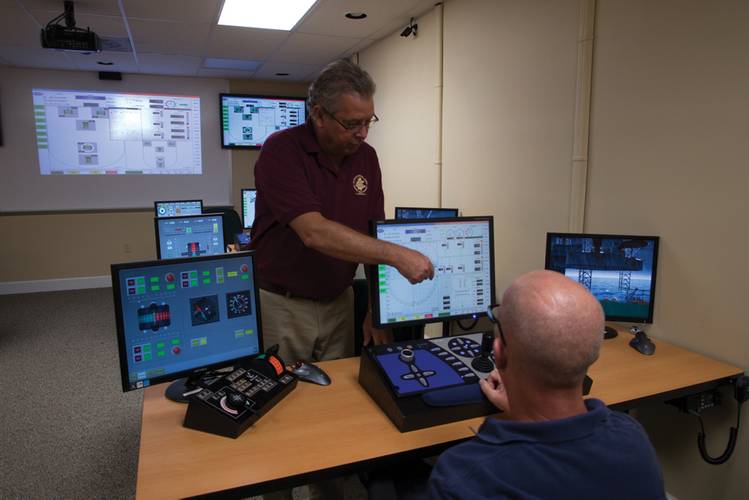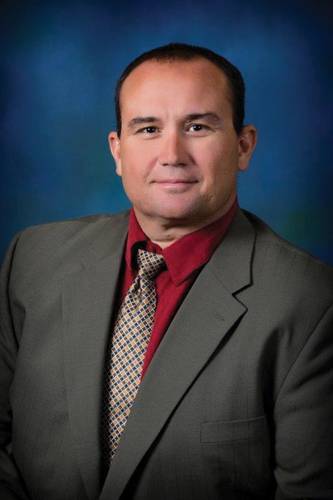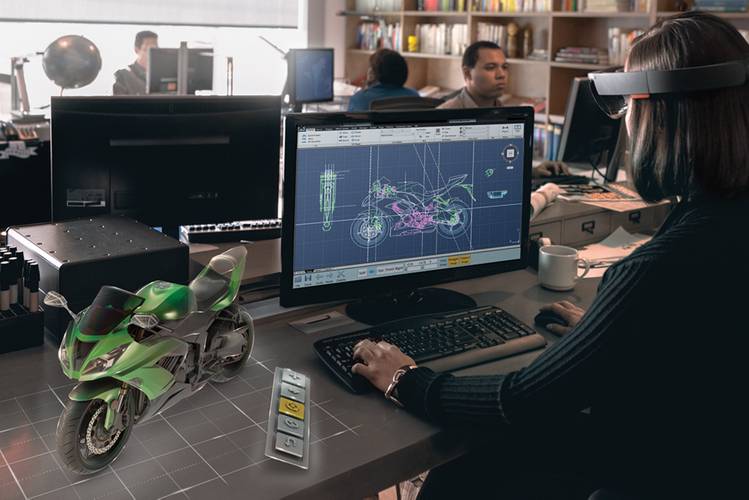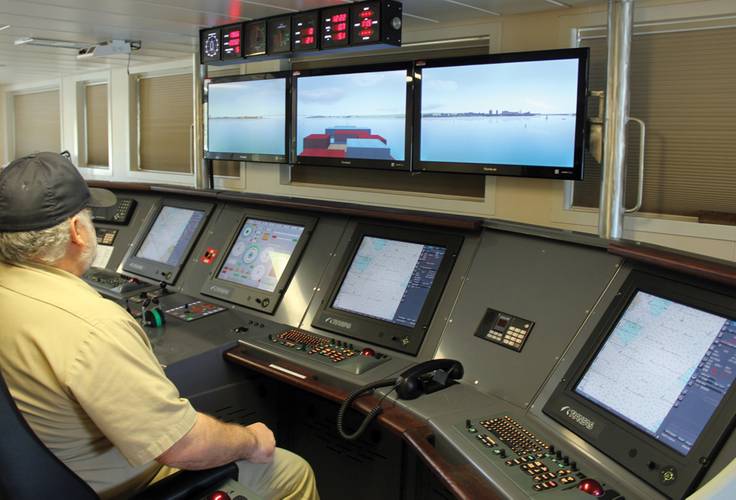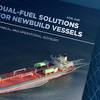The New Reality: Investment in Maritime Simulation Surges
The proliferation of increasingly sophisticated and realistic maritime simulation facilities is taking the market by storm, with investment globally to train new and old mariners alike to exacting new standards.
“Simulation technology has continued on a more or less steadily upward trajectory over the last ten years,” said Sam Pecota, Director of Simulation, California Maritime Academy, “The clarity and fidelity of our current full mission simulators is significantly superior to that which was possible at the turn of the century. But this improvement is mainly a matter of degree, not a total revolution. That sort of paradigm shift in simulation training may by coming soon however, with the introduction of wearable devices like Google Glass and Microsoft HoloLens.”
Pecota is not alone, as there has been a palpable advancement and investment in next-generation simulation technology globally.
“Twenty years ago simulation was an extremely limited, extremely complex, and extremely expensive training tool,” said Capt. Ted Morley, Chief Operations Officer of Maritime Professional Training. (MPT) “Advances in technology have sparked tremendous improvement in the quality of simulation and in what simulation can do. MPT installed the first privately owned simulation facility in 2002, in the ensuing years we have had an ongoing upgrade system that has allowed our systems to grow and stay at the cutting edge. The biggest changes we see now is integration of systems, the ability of today’s simulators to take very complex real-world systems and rather than simulate them, today’s simulators can generate and feed the necessary data to stimulate that equipment.”
While certainly not the only game in town, Transas has been a driver in delivering latest simulation technologies, integrated in increasingly complex models to deliver as real of a feel as a mariner can get without actually getting wet.
“From our perspective there has been an increase in simulation activity in the last months, and in fact a general upward trend in demand for some time now,” said Neil Bennett, Sales, Transas Americas, Inc. “ I think there is an ever widening acceptance of the value of simulation as part of maritime training.”
Pecota agrees. “Simulation training is no longer a luxury in the maritime education and training business: It is vital that through carefully controlled and effective simulation training maritime students develop ‘bridge-mindedness’ to a very high degree well before being turned loose to operate multimillion dollar vessels capable of causing catastrophic environmental disasters after simple navigational or collision avoidance errors. The same applies to engineering and cargo handling simulation.”
The Drivers for Growth
Drivers for the growth in simulation depends on a number of factors, as the simulation market mirrors the diversity of maritime itself: blue water, brown water, offshore, engine room and every specialty in between, if it is run on a commercial ship or boat it can be simulated.
“The underlying driver is of course International maritime regulations, STCW, which in turn results in new national requirements, as well as associated standards,” said Bennett from Transas. “But the technological capabilities of simulators, as well as the equipment used aboard ships, is clearly advancing on a steeper curve than the regulation. This has allowed industry to advance its own applications of simulation, beyond STCW, to meet specific needs. The offshore industry is a good example, where independent standards, such as the Nautical Institute Dynamic Positioning Operator Training Scheme, which incorporates simulator training extensively, has become an internationally recognized standard of high quality, and has responded to the increasing demand for DPOs worldwide.”
Up until the middle of last year the Offshore market was still running hot, and capacity to train a new generation of offshore workers was proceeding at a brisk pace. Fast forward six months and the global price for oil is still stuck in neutral, but at least one who invested to this end doesn’t feel the money spent was for naught. “Certainly the recent (but now diminished) boom in the offshore sector was a big factor,” in recent investments made in simulation training, explained Dave Boldt of Resolve Marine Group in Ft. Lauderdale, Fla.. “But Dynamic Positiioning (DP) is becoming nearly ubiquitous in several sectors of the market. Including ferries, tankers, small cargo, cruise and even yachts, and we all know the offshore sector will rebound which is a steady source of training requirements. We are confident in the long term outlook offshore. Even if this slow down is a relatively long one there is nothing to suggest that the industry will not rebound strongly in time.”
MPT’s Capt. Morley agrees: “Offshore Industry Training is one of five key market divisions at MPT. The recent downturn in the price of oil, and the geo-political issues surrounding it, we believe will be short-term.”
Investments
Maritime Professional Training (MPT) has been particularly active in expanding, investing $5m in the expansion of four bustling facilities. According to Capt. Morley, the jewel of the expansion is a new 25,000 sq. ft. facility, with more than 15,000 sq. ft. dedicated to simulation. In addition to the new building, an additional 9,000 sq. ft. of existing space will be remodeled with new classrooms, meeting areas and a conference center.
“All four of our Broward County campuses will receive significant technology upgrades allowing for live streaming and cloud-based data sharing between them,” said Capt. Morley.
The technical specs on the new equipment housed in the new facilities is equally impressive, with a total of four full mission Class A simulators; three navigational bridge simulators and one Engine Control Room simulator; 30 partial task desk top simulator stations; upgrades to the DP lab and ECDIS labs; as well as new equipment for the Radar/ARPA lab.
In total, Morley said the enhancements represent an approximate 50% increase in seats and facility size. Total number of seats available will exceed 350 in all classrooms, not including the conference center or meeting hall.
On the West Coast, Cal Maritime and its partners have invested more than $1 million in new simulation equipment and upgrades to existing facilities, according to Pecota.
He said an L3 engine simulator was installed in the Engineering Building Power Lab, a simulator that was donated by Chevron Corporation. For its part Cal Maritime provided a newly constructed space within the larger Power Lab to house the L3 simulator, and professional training courses using the new facility are due to begin in April 2015.
“Chevron needed a good location for its preferred type of engine room simulator (L3), one that can be linked to our Transas full mission bridge simulators to provide simultaneous deck/engine integrated training for its employees,” said Pecota. “Cal Maritime will use the new simulator in its undergraduate engineering courses when not being used by Chevron.”
Cal Maritime is unique in another sense in that its Training Ship Golden Bear features a simulator, and the Navigation Laboratory’s full mission and part task simulators are receiving a $50,000 upgrade to the Instructor Operation Station. “Cal Maritime’s Golden Bear is the only maritime academy training vessel in the U.S. with advanced simulation facilities that greatly enhance the cruise experience for cadet students,” said Pecota. The upgrade includes expanded space for the instructor’s operating room and server room, and additional workstations and monitors to allow for better simultaneous operation of the full mission bridge and classroom part-task simulators.
Resolve Marine Group in Fort Lauderdale has also invested recently in its simulation facilities, to the tune of approximately $1 million, according to Boldt. RMG has added an additional 7,000 sq. ft. to include new classrooms, DP Class, office space, flex-use tug/DP bridges and relocation of the full mission bridge. In addition, there is a new two story, four compartment wet trainer next to the Fire Trainer, the Gray Manatee, in Port Everglades. Attracting business from the offshore sector was a driver for the most recent expansion, and to that end the new facilities include a DP Class featuring 8 x DP 1 or 4 x DP2 desk top trainers. The system and simulation is Transas NTPro and DP units are MT. The Tug/DP Bridges will also be Transas NTPro and allow Resolve to create courses specific for the harbor and escort tug markets, ship handling, pilotage, Boldt explained.
While offshore training was a driver for recent expansion, Boldt believes that there is a pervasive movement within much of maritime that is going to make simulation training a cornerstone for many maritime companies. “There is a trend in the entire industry toward understanding the value and importance of simulator training,” said Boldt. “It is not the end all be all, and it is not a replacement for hands on training, but it is absolutely proven to be a vital piece of the puzzle when training and assessing competencies that are difficult or impractical to practice at sea.”
To this end, Boldt looks to the top of Resolve Marine Group as the ultimate driver of the company’s recent simulation training expansion. “Joe Farrell is an innovator and a visionary,” said Boldt. “He has a great sense of the industry and a great belief in his team to put his vision into practice. Certainly we look at traditional (market) indicators and read Maritime Reporter religiously but Joe is the driver.”
Late last year Morton S. Bouchard, III helped to officially open The Bouchard Transportation Co., Inc. Tug & Barge Simulation Center on the campus of the State University of New York (SUNY) Maritime College. In explaining the decision to invest in the simulator, Bouchard said, “The way it came about was really simple: we always had a simulator in New York Harbor, and the company that was operating that simulator moved it down to Houston. So we partnered with SUNY Maritime to build a first-class simulator on campus that would not only benefit cadets, but would benefit our employees. We’re going to do our training here with our captains and mates.”
The Bouchard Transportation Company, Inc. Tug and Barge Simulation Center is the latest in Kongsberg Polaris Bridge simulation technology, utilizing an industry-inspired bridge console arrangement, with the latest hydrodynamic ship models and exercise areas. The Center offers full mission bridge simulators, instruction stations and a de-briefing area where instructors can discuss topics including navigation, seamanship and bridge resource management skills required in the operation of tugs and barges. Training on this state-of-the-art Center ensures that students enrolled at the College, and professional mariners alike, are well-educated and trained in a controlled environment. Attention will be given to the complexities of operating tugs and barges, ranging in size from 3,000 to 12,000 horsepower, which carry all types of commodities. The Center creates new opportunities and better prepares future and current professionals for successful careers in the maritime industry. While the simulation center was funded by Bouchard, features replica simulation models of the Bouchard fleet and will serve to train and maintain Bouchard seamen, the center is a critical resource for SUNY Maritime cadets and is open for business industry companies and professionals.
Putting simulation training in perspective, Bouchard said, “Training and education is 200% more today. You cannot be profitable in this industry unless you are safe. You cannot be safe unless you train, but that’s not only in the simulator, it’s every day on these vessels. The captains in our company are held to the highest standards to be safe, and that is the only way that you can be profitable.”
(As published in the March 2015 edition of Maritime Reporter & Engineering News - http://magazines.marinelink.com/Magazines/MaritimeReporter)









